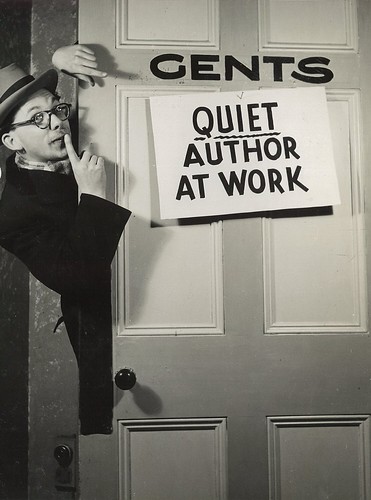To write, I need to concentrate. To concentrate, I need to have a clear mind. And, when something is bothering me, it is hard to have a clear mind, and, consequently, to write. So, how do you write when you have too much on your mind?

The simple answer is that you can not write when your mind is preoccupied with other things. To concentrate, you have to get the problem off your mind. The difficulty that clearing your mind involves depends on how big of a problem you have. Some problems can be taken care of fairly easily, whereas others are much bigger and require major steps. Let’s start with the easy kind of problems.
Annoyances with an Easy Fix
Let’s say you can’t write because you cannot stop thinking about an annoying email from a student asking you if they can enroll in your class even though they will miss 75% of the class sessions because of baseball practice and you can’t get it off of your mind. (Of course, you should not have opened your email before writing, but, that’s beside the point.) The best thing to do in this situation is to respond to the email.Do something about the situation instead of letting it bother you. Tell the student attendance is required in your class, and that you cannot make any exceptions. Then, close the browser window and get back to writing.
Respond to What's Eating You and Get it Out of Your System
This technique – of responding to situations that bother you to get them off of your mind – also can work for more complex problems. If, for example, your chair just asked you to serve on yet another committee even though you are already on five other committees and you are all wound up about what to do about it, the best thing to do is to send a firm email explaining why this is not a good time for you to take on another committee assignment. Again, act, and get it out of your system.Suppose your problem is that you have just received a rejection letter from a journal and feel depressed about your academic future. The best thing to do is to be pro-active. Take out a pen and make a plan for submitting the article to another journal. Set a firm date as a goal for beginning the revisions and for submission. Having a plan will make it easier to move forward.
If you are having general problems with concentrating, you also might consider doing meditation, which has been shown to enhance concentration.
Acknowledge Your Emotions and Work with Them
It is essential to acknowledge your emotions and to work with them. If you had an argument with your partner this morning, and can’t get it off of your mind, sometimes it is best to acknowledge that you are upset, and to engage in tasks that do not require much concentration. You can fix the bibliography on your latest manuscript or organize those articles that are piling up on your desk. Who knows, you might even calm yourself down while you are busy looking up citation formats in the Chicago Manual of Style.Of course, there are some problems that are not going away any time soon. You may be involved in a custody battle with your spouse. Your mother may be dying of cancer. You may be on the brink of divorce. To figure out how to be productive in those very trying circumstances is much less simple.
The first question you have to ask yourself is: how long is this going to last? If your sister has been diagnosed with terminal cancer and will die within the next thirty days, by all means, drop everything and spend every minute you can with her. If, on the other hand, you have a mentally ill brother who requires long-term care, you have to decide how much of a role you are going to play in his care, and set limits to the amount of time and energy you give him.
Setting limits on what you can do for your loved ones is difficult. But, often, it is for the best. If you depend on your job for your financial solvency, it would be detrimental in the long term for you to spend so much time caring for others that you end up losing your job. Once you have lost your job, you likely will be of much less use to your loved ones who rely on your emotional and financial support. So, be sure to keep the long-term in mind.
Finally, do not hesitate to seek out professional help if you are having trouble dealing with your problems on your own. If you find yourself unable to move forward with your life or your work because of constant emotional setbacks, your best bet is to seek out a qualified therapist, psychologist, or psychiatrist who can help you to find the most appropriate solutions for you.



